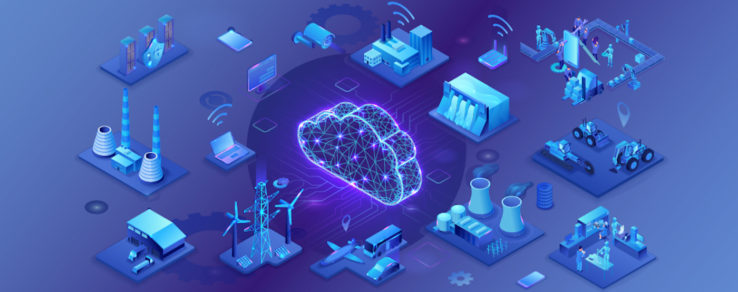With the rise of renewable energy, the way that energy is distributed is changing. The traditional top-down method of energy distribution, from the utility to the customer, doesn’t always apply to energy from solar, wind and other renewable sources — some of which may be generated by customers themselves.
In these cases, where power flow is actually bidirectional, virtual power plants (VPPs) are becoming a more common distribution option.
What is a virtual power plant?
A virtual power plant is a network of decentralized generation sources, such as wind farms, solar arrays and combined heat and power units, that work in coordination with storage systems and flexible energy consumers.
While VPPs may take a variety of different forms, they all operate with one goal: to relieve demand on the grid. They do this by distributing the power generated by individual units during peak hours.
How does a virtual power plant work?
Virtual power plant participants are connected to a central control system that can boost or decrease energy output in real time. VPPs can provide demand response automatically, responding immediately to price signals, shifting commercial and residential loads, or aggregating other distributed energy resources.
All participants are monitored and controlled with a single system, which makes it easy to initiate these distribution adjustments. The system can also show real-time data consumption of each distributed energy resource (DER) on the grid.
VPPs are not the same as a microgrid, which has a confined boundary and can disconnect from the larger grid to create a power island. VPPs can cover much wider geography and can grow or shrink depending upon real-time market conditions.
The goal of a virtual power plant
Overall, the purpose of a virtual power plant is to connect and network DERs, demand response programs and storage systems in order to monitor, forecast, optimize and distribute their generation or consumption. Including these various DERs in one VPP means the data can be forecasted and analyzed as though it was a single power plant.
The VPP also allows energy utilities to separate the DERs by type and location so they can segment customers. By using segmentation to their advantage, energy utilities can determine what kind of value the VPPs bring to customers.
Energy utilities and virtual power plants
Virtual power plants allow energy utilities to better assess and correct demand response issues. For example, Green Mountain Power in Vermont created a VPP with 500 batteries in homes to address peak demand, yielding $500,000 in savings in one one-hour peak demand period.
In some states, there is growing conflict between energy utilities and third party DERs over who has “control” over the VPPs. For example, PPL Corporation in Pennsylvania is currently in a heated debate against a distributed resource aggregation service business, Sunrun, regarding management of the DERs and the regulations put upon solar customers. In other areas, such as California, New England and New York, “third-party companies have signed bilateral contracts with utilities whereby the company is in the driver’s seat for DER management and the utility is a customer instead of a competitor.” These agreements naturally take away the debate and competition for control.
Despite the growing popularity of virtual power plants, these conflicts demonstrate the need for uniform regulations regarding ownership. Still, the cost savings and environmental benefits for both energy utilities and customers prove VPPs will be useful as energy distribution continues to evolve. In addition, they help make renewable energy more readily available on the grid and provide solutions to demand response efforts.
The future of virtual power plants may be murky as the operations continue to evolve, but one thing is clear: this is the future of energy distribution.

